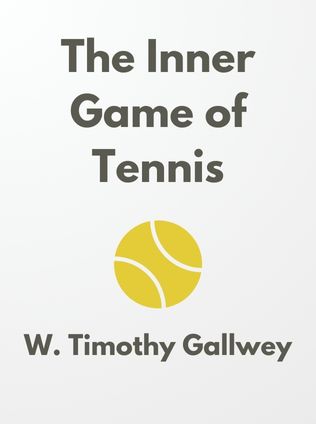
The Inner Game of Tennis
The Classic Guide to the Mental Side of Peak Performance
By W. Timothy Gallwey
Published 01/1974
About the Author
Timothy Gallwey is a pioneer in the field of sports psychology and is best known for his contributions to the development of the "Inner Game" approach, which has profoundly influenced not only the world of sports but also the broader landscape of personal development and self-mastery. Gallwey's journey into this field began as a tennis player and coach, where he observed that the biggest obstacles to performance were often not physical but mental. His insights led him to explore the interplay between mind and body, eventually culminating in his seminal work, The Inner Game of Tennis. Gallwey's approach emphasizes the importance of quieting the mind and trusting the body to perform naturally, a concept that has resonated with athletes, business leaders, and individuals seeking to improve their personal and professional lives.
Main Idea
The core of The Inner Game of Tennis revolves around the concept that the primary challenges in tennis, as in life, are mental rather than physical. Gallwey introduces the idea of two selves within every player: Self 1, the ego-driven, judgmental mind, and Self 2, the intuitive, natural part of us that knows how to perform without interference. The book explores how these two selves interact and often conflict, leading to suboptimal performance. The solution, according to Gallwey, is to quiet Self 1 and allow Self 2 to take over, thus enabling a state of "relaxed concentration" where peak performance is possible. This concept extends beyond tennis, offering valuable insights into how we can overcome mental barriers in any area of life.
Table of Contents
- Introduction to the Inner Game
- Understanding Self 1 and Self 2
- The Importance of Nonjudgmental Observation
- Mastering the Art of Relaxed Concentration
- Applying the Inner Game Principles Beyond Tennis
- Developing Focus and Awareness
- Overcoming Mental Obstacles
- The Role of Imagery in Performance
- Achieving Personal Growth Through the Inner Game
- Conclusion: The Inner Game as a Life Philosophy
Introduction to the Inner Game
In The Inner Game of Tennis, Gallwey begins by challenging the conventional approach to learning and improving in sports. He argues that traditional methods, which focus heavily on technique and external instruction, often neglect the crucial mental aspects of performance. Gallwey introduces the concept of the "inner game," a mental battle that takes place within every player. He asserts that this inner game is the real key to success, not just in tennis but in any endeavor.
"The greatest opponent isn't the player on the other side of the net; it's the one on your side." – Timothy Gallwey
Gallwey's assertion highlights the idea that our true competition lies within ourselves. The doubts, fears, and self-criticism that often plague us are the real obstacles to achieving our potential. By recognizing and addressing these inner challenges, we can unlock new levels of performance and satisfaction.
Understanding Self 1 and Self 2
The cornerstone of Gallwey's philosophy is the distinction between Self 1 and Self 2. Self 1 is the voice of the ego, the part of us that is constantly judging, analyzing, and trying to control every action. This self is often responsible for the negative thoughts that hinder performance, such as "I must hit the ball perfectly" or "I can't afford to lose this point."
In contrast, Self 2 is the part of us that simply knows what to do. It is the natural, instinctive self that can execute a perfect tennis stroke without thinking about it. Self 2 operates best when it is free from interference by Self 1. Gallwey's key insight is that the more we can quiet Self 1 and trust Self 2, the better we will perform.
"Self 1 is the teller; Self 2 is the doer." – Timothy Gallwey
Gallwey explains that most of us have been conditioned to over-rely on Self 1, believing that constant analysis and control are necessary for success. However, this approach often leads to tension, overthinking, and ultimately, failure. The goal is to develop trust in Self 2, allowing it to take over and perform naturally.
Sign up for FREE and get access to 1,400+ books summaries.
You May Also Like
The Subtle Art of Not Giving a F*ck
A Counterintuitive Approach to Living a Good Life
By Mark MansonRich Dad Poor Dad
What the Rich Teach Their Kids About Money - That the Poor and Middle Class Do Not!
By Robert T. KiyosakiHow To Win Friends and Influence People
The All-Time Classic Manual Of People Skills
By Dale CarnegieFreakonomics
A Rogue Economist Explores the Hidden Side of Everything
By Steven D. Levitt and Stephen J. Dubner



















